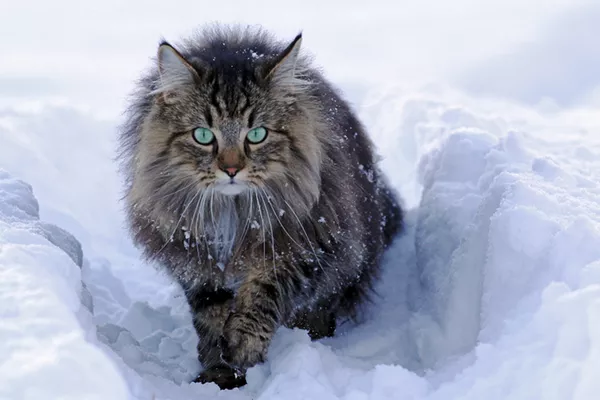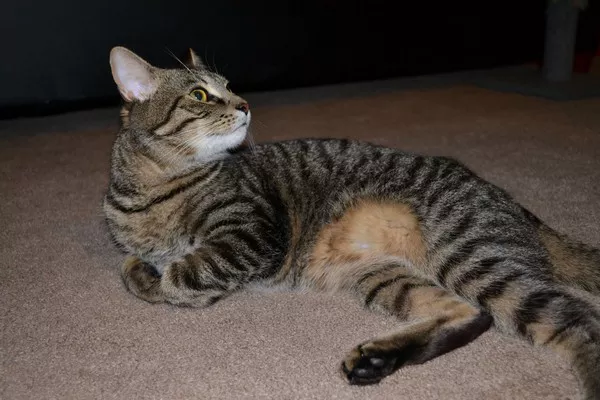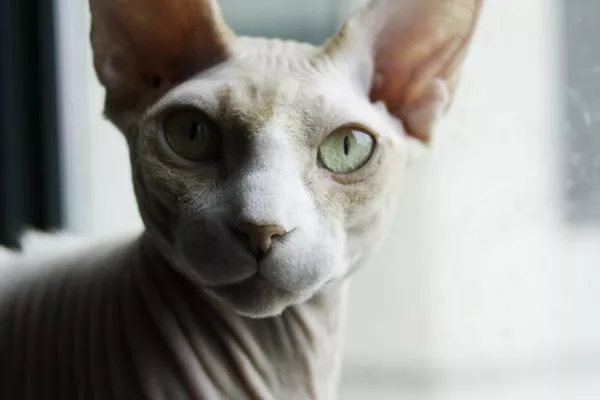Norwegian Forest Cats, with their majestic appearance and rugged charm, are not only beloved companions but also renowned for their unique dietary needs. As natural hunters and explorers, these feline friends require a balanced and nutritious diet to support their active lifestyle and maintain optimal health. In this comprehensive guide, we’ll delve into the dietary needs of Norwegian Forest Cats, providing practical insights into what to feed your furry friend for a lifetime of health and vitality.
Introduction to Norwegian Forest Cats
Before delving into their dietary needs, let’s explore some key characteristics of Norwegian Forest Cats:
1. Origin and History:
Norwegian Forest Cats, or “Wegies” as they are affectionately known, are a natural breed that originated in Norway. They evolved to adapt to their rugged environment, developing strong, muscular bodies and thick, waterproof coats to withstand the harsh climate of the Scandinavian forests.
2. Physical Characteristics:
Norwegian Forest Cats are known for their robust build, tufted ears, and bushy tails. They have a wild appearance reminiscent of their ancestors, with long, flowing fur that insulates them from the cold and expressive eyes that reflect their intelligence and curiosity.
3. Temperament and Personality:
Norwegian Forest Cats are intelligent, independent, and highly adaptable animals. They are known for their gentle and affectionate nature, forming strong bonds with their human companions. Despite their rugged exterior, Norwegian Forest Cats are often described as “gentle giants” for their loving demeanor and playful antics.
Understanding the Dietary Needs of Norwegian Forest Cats
Now that we’ve explored some key characteristics of Norwegian Forest Cats, let’s delve into their dietary needs:
1. Protein-Rich Diet:
Norwegian Forest Cats are obligate carnivores, meaning they require a diet that is rich in animal-based protein to thrive. Protein is essential for maintaining strong muscles, supporting healthy growth and development, and providing energy for their active lifestyle. Look for high-quality cat foods that list meat, poultry, or fish as the first ingredient.
2. Moderate Fat Content:
While fat is an important source of energy for Norwegian Forest Cats, it’s essential to provide them with a diet that contains moderate levels of fat. Too much fat can lead to obesity and other health problems, while too little fat may result in a lack of energy and poor coat condition. Aim for a balanced diet that provides around 15% to 20% fat content.
3. Essential Nutrients:
In addition to protein and fat, Norwegian Forest Cats require essential nutrients such as vitamins, minerals, and amino acids to support overall health and well-being. Look for cat foods that are formulated to meet the nutritional needs of all life stages, including kitten, adult, and senior formulas. These foods are specifically designed to provide the optimal balance of nutrients for Norwegian Forest Cats at each stage of life.
Choosing the Right Cat Food for Your Norwegian Forest Cat
When selecting cat food for your Norwegian Forest Cat, consider the following factors:
1. High-Quality Ingredients:
Choose cat foods that contain high-quality, natural ingredients and are free from artificial additives, fillers, and by-products. Look for meats, poultry, or fish as the first ingredient, and avoid foods that contain excessive amounts of carbohydrates or preservatives.
2. Life Stage Formulas:
Select cat foods that are specifically formulated to meet the nutritional needs of Norwegian Forest Cats at their particular life stage. Kitten formulas provide the extra protein and calories needed for growth and development, while adult formulas support maintenance and overall health. Senior formulas may contain additional nutrients to support aging cats’ health and vitality.
3. Wet vs. Dry Food:
Consider offering a combination of wet and dry cat food to provide variety and ensure adequate hydration. Wet cat food is high in moisture and can help prevent urinary tract issues, while dry cat food provides dental benefits and can help satisfy a cat’s natural urge to chew. Be sure to monitor your cat’s overall calorie intake and adjust portions accordingly to prevent weight gain or loss.
Feeding Tips for Norwegian Forest Cats
To ensure your Norwegian Forest Cat maintains optimal health and vitality, consider the following feeding tips:
1. Portion Control:
Measure your cat’s food portions carefully to prevent overfeeding or underfeeding. Follow the feeding guidelines provided on the cat food packaging, and adjust portions as needed based on your cat’s age, weight, activity level, and overall health.
2. Regular Feeding Schedule:
Establish a regular feeding schedule for your Norwegian Forest Cat and stick to it consistently. Offer meals at the same times each day, and avoid free-feeding or leaving food out all day. Consistency is key to maintaining a healthy weight and preventing digestive upset.
3. Monitor Your Cat’s Weight and Body Condition:
Keep an eye on your Norwegian Forest Cat’s weight and body condition and adjust their diet as needed to maintain a healthy weight. Feel their ribs and waistline regularly to ensure they are in good condition, and consult with your veterinarian if you notice any changes in their weight or appetite.
Conclusion: Providing Optimal Nutrition for Your Norwegian Forest Cat
In conclusion, Norwegian Forest Cats require a balanced and nutritious diet to support their active lifestyle and maintain optimal health and vitality. By providing a diet that is rich in animal-based protein, moderate in fat content, and supplemented with essential nutrients, you can ensure your Norwegian Forest Cat thrives throughout all stages of life. With careful consideration and proper feeding practices, you can provide your feline friend with the nutrition they need for a lifetime of health and happiness.
FAQs:
1. Do Norwegian Forest cats eat more?
Norwegian Forest Cats do not necessarily eat more than other breeds, but they may have hearty appetites due to their active nature and muscular build. As natural hunters, they require a diet rich in protein to maintain their energy levels and muscle mass. However, it’s essential to monitor their food intake and ensure they receive a balanced diet to prevent obesity and associated health issues. Providing regular exercise and portion-controlled meals can help manage their appetite and maintain their overall health and well-being.
2. What do Norwegian Forest cats like?
Norwegian Forest Cats, known for their independent yet affectionate nature, enjoy a variety of activities and interactions with their human companions. They particularly appreciate engaging in play sessions that mimic hunting behaviors, such as chasing toys or interactive games. Additionally, these intelligent cats thrive on mental stimulation and may enjoy puzzle feeders or training sessions that challenge their problem-solving skills. Creating elevated perches or cat trees allows them to satisfy their natural climbing instincts while providing a cozy spot to observe their surroundings. Ultimately, Norwegian Forest Cats appreciate environments that offer both physical and mental enrichment.
3. Do Norwegian Forest cats have sensitive stomachs?
While Norwegian Forest Cats are generally robust and healthy, like any breed, some individuals may have sensitive stomachs. Factors such as dietary changes, food allergies, or intolerances can contribute to gastrointestinal issues in these cats. It’s essential to provide a high-quality diet formulated for their specific nutritional needs and monitor their digestive health closely. Introducing new foods gradually and avoiding sudden dietary changes can help prevent stomach upset. Consulting with a veterinarian is advisable if you notice persistent digestive issues in your Norwegian Forest Cat to identify and address any underlying concerns effectively.


























